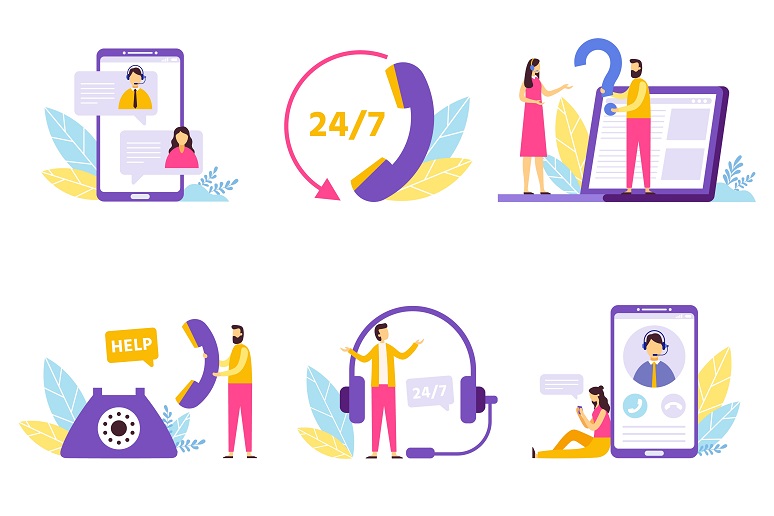For decades, enterprise communications have been an esoteric industry. Companies like Avaya, Ericsson, and Nortel became giants with highly specialized technologies for communications. Over the past decade or so, the industry has moved toward more mainstream information technologies. As a result, general IT companies, some of the largest on the planet, now provide solutions for enterprise communications including Amazon, Google, Microsoft, and Facebook.
The industry’s language and topics are also shifting. Cloud, software as service (SaaS), application program interface (APIs), and other general IT terms are increasingly relevant in a sector that matured with more specialized terms such as call groups, ACDs, simultaneous ring, and more. Today, both enterprise comms and general IT borrow terms from each other.
The latest term is composability. It’s not a particularly new concept in IT, but it’s quickly gaining traction in the contact center. Like most new things in IT, it’s more of an evolution than a revolution. In enterprise comms, we have been talking about communications-enabled business processes (CEBP), APIs, communications platform as a service (CPaaS), and other forms of extensibility for some time. Composability builds on these concepts and folds in analytics and interoperability.
The composable contact center evolves a heritage of large, complex applications that created the contact center industry with APIs powered by independent services. The logic is that more granular controls enable unprecedented ability to adapt and respond to changes. While there’s certainly a technical element, the concept is more than a new feature or a tech upgrade.
Enterprise technology has gone through multiple shifts, but they have largely been product-focused. The vendors shifted from hardware to software, then software to cloud-delivered services, but the concept remained that the vendor creates the solution and the customer implements it. Along the way, the solutions evolved from monolithic applications to more granular architectures.
The API economy enables customers to create and customize their solutions more easily. It has also enabled a shift from large, all-in-one applications to multi-vendor ecosystems. The line between features and products became less clear.
The purveyors of communications-related building blocks are known collectively as CPaaS providers. It’s a good start, but building a customer engagement solution from CPaaS isn’t trivial. It’s like the difference between a full grocery cart and a meal. A lot of required work (and magic) is required. CPaaS providers offer building blocks, but customers are on their own to build a complete solution.
This didn’t bother a new breed of digital native companies that created powerful applications for their internal use. Traditionally, software companies created software as a product for sale, but these digital natives have built software that isn’t for sale. Companies such as Facebook, Google, Airbnb, and Instacart created their own core, operational software that happens to include customer engagement components. It provides them both an advantage and a defense against competitors.
This worked well for emerging companies that create new sectors, but most businesses are in existing, defined industries. They don’t need to build everything but do want ways to further integrate customer engagement into their workflows and processes.
That brings us to the composable contact center. It’s a perfect place to start because every implementation is inherently customized anyway. There’s no such thing as an off-the-shelf contact center implementation.
Not long ago, CPaaS was very separate from UCaaS and CCaaS. CPaaS solutions were sold to developers and UCaaS and CCaaS were sold to IT or line of business leaders. There was a lot of confusion when Vonage acquired Nexmo in 2016 (
see related No Jitter article). However, it proved to be a prescient move. Since then, we have seen many UCaaS and CCaaS providers move toward CPaaS including 8x8, Avaya, Five9, and RingCentral. The composable contact center sits between CCaaS and CPaaS.
For example, Avaya’s OneCloud service offers many of the company’s core products such as UCaaS, CCaaS, and CPaaS services that “
enable today’s composable enterprise.” CPaaS providers have moved closer to applications too. At Enterprise Connect 2018,
Twilio launched Flex, an “application platform” designed to develop, customize, and manage a contact center.
The composable contact center fosters a change in the way we approach customer engagement. The old model was to design and implement a custom contact center based on organizational needs and then shift into operations. The new approach is to design the contact center for continuous improvement. Essentially, design, implementation, and operations are a continuous process.
The composable, distributed application is built on distributed services potentially from multiple providers. Instead of tweaking options from within a vendor’s administration portal, organizations can now compose solutions that leverage a variety of services including routing, intelligent virtual agents (IVAs), and workforce engagement — often in real-time.
The composable contact center allows administrators to customize every part of the contact center. For example, new services, such as channels, integrations, and bots can be added, adjusted, or removed with minimal disruption.
Composable infrastructure involves both computing resources and software. It’s highly flexible regarding deployment models and is inherently scalable. Composable IT infrastructure is an emerging concept, but composable contact centers are particularly compelling as there are so many variables that can impact its configuration.
Dave Michels is a Contributing Editor and analyst at TalkingPointz.
Discover all of the latest technology trends and topics in enterprise communications and collaboration at Enterprise Connect this Sept. 27-29 in Orlando, Fla. Use the promo code NJAL200 to receive a $200 discount. Register now!











